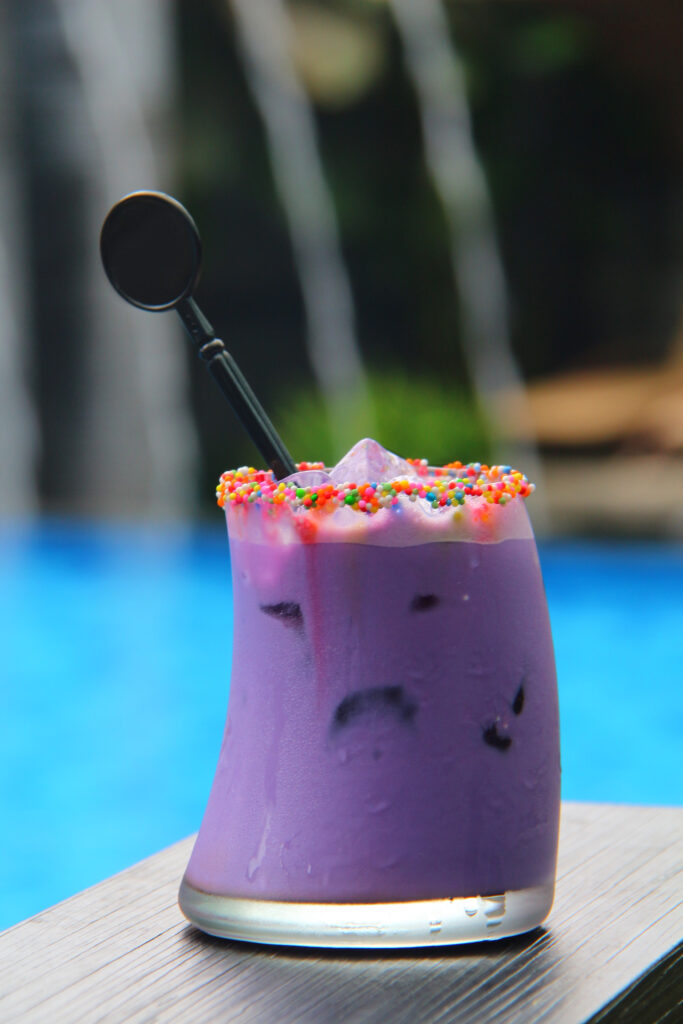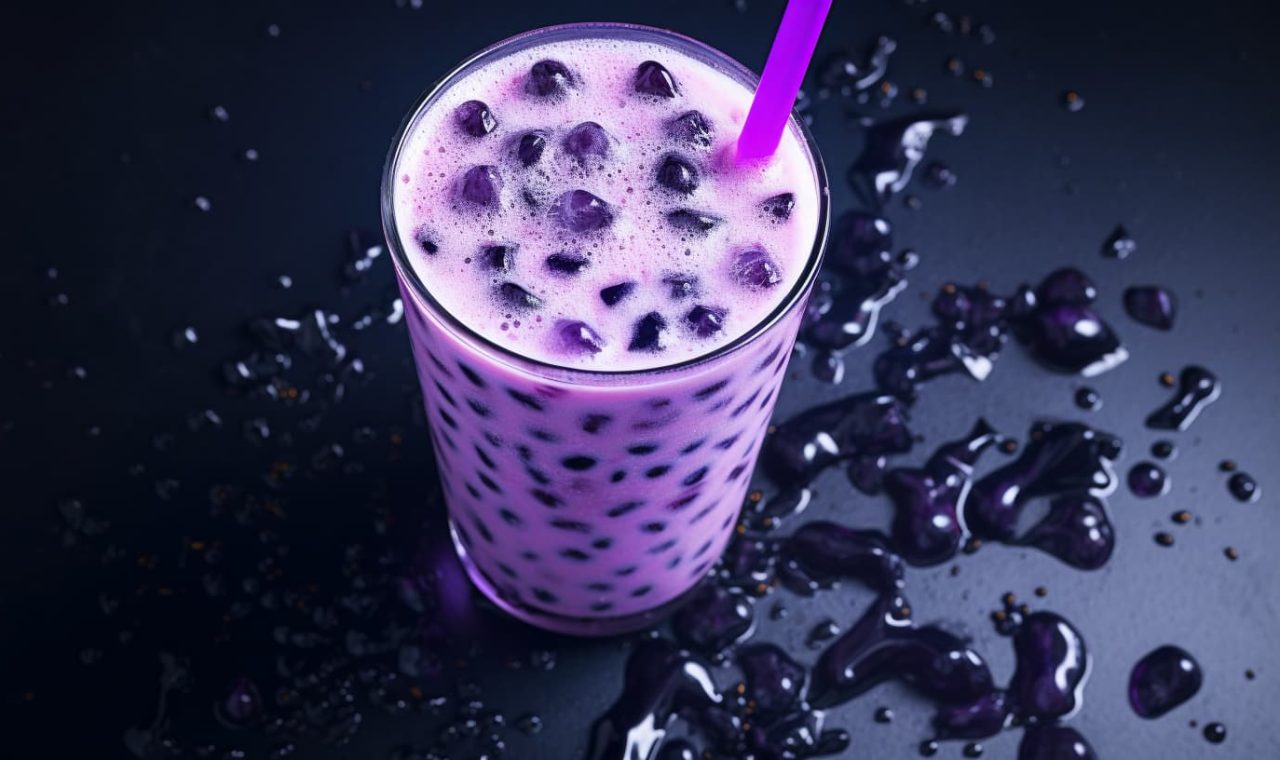Bubble tea: taro flavour
Bubble tea enthusiasts, have you ever ventured into the world of taro bubble tea? If not, you’re in for a treat! Taro bubble tea is a unique and delightful variation of this beloved Taiwanese beverage. In this blog, we’ll delve into what taro bubble tea is, explore what makes it so special, and uncover what this intriguing flavor tastes like.
Taro bubble tea can
Before we dive into the delicious details, let’s answer the pressing question: Can you make taro bubble tea at home? The answer is a resounding yes! Taro bubble tea is not just a specialty you can find at bubble tea shops; you can easily whip up this delightful concoction in your own kitchen with a few key ingredients.

What does taro bubble tea taste like?
Now, onto the most exciting part – what does taro bubble tea taste like? Taro is a starchy root vegetable that hails from Southeast Asia and is a staple in many dishes. When incorporated into bubble tea, it lends a unique and captivating flavor profile.
- Creamy and Nutty: Taro bubble tea is known for its rich and creamy texture, making it incredibly indulgent. It’s often described as having a nutty undertone, reminiscent of sweet, roasted nuts.
- Mildly Sweet: Taro itself is naturally sweet, so taro bubble tea doesn’t require excessive added sugar. The sweetness in this beverage is usually subtle, allowing the natural taro flavor to shine through.
- Earthy and Floral: Taro has an earthy and slightly floral quality, which adds depth and complexity to the overall taste. This unique combination of flavors sets it apart from more traditional bubble tea options like classic milk tea or fruity varieties.
- Purple Perfection: Beyond its taste, taro bubble tea is also famous for its stunning purple hue, which comes from the taro root itself. This vibrant color adds an element of visual appeal that’s hard to resist.
What is taro root?
Taro root, often simply referred to as taro, is a starchy tuber that is widely consumed as a staple food in various parts of the world, particularly in tropical and subtropical regions. It belongs to the Araceae family and is scientifically known as Colocasia esculenta. Taro is cultivated for its edible corms (tuber-like structures) and leaves.

Here are some key characteristics and information about taro root:
- Appearance: Taro roots vary in size and shape, but they are generally bulbous and covered with a rough, hairy outer skin. The color of the skin can range from light brown to dark purple, depending on the variety. The flesh inside is usually white or pale purple.
- Texture: When cooked, taro root becomes soft and somewhat creamy in texture, making it suitable for a wide range of culinary applications.
- Flavor: Taro root has a unique flavor that is often described as nutty and slightly sweet. It’s known for its ability to absorb the flavors of other ingredients in dishes.
- Cultural Significance: Taro is a significant part of the traditional diets of many cultures, particularly in Asia, Africa, the Pacific Islands, and the Caribbean. It plays a vital role in both savory and sweet dishes.
- Versatility: Taro can be prepared in various ways, including boiling, steaming, frying, and mashing. It is used in soups, stews, curries, and as a side dish in many cuisines. Taro is also used to make snacks, chips, and desserts.
- Nutritional Value: Taro is a good source of carbohydrates, fiber, and several essential vitamins and minerals, including vitamin E, vitamin B6, folate, potassium, and magnesium. It is low in fat and contains no cholesterol.
- Preparation: It’s important to note that raw taro root contains compounds that can be irritating to the skin and mucous membranes. To make it safe for consumption, taro must be properly cooked, as cooking breaks down these compounds.
- Varieties: There are numerous varieties of taro, each with its unique characteristics and flavors. Some are better suited for certain types of dishes, such as soups or stews, while others are preferred for making desserts.
Taro root is a versatile and nutritious ingredient that adds depth of flavor and a creamy texture to a wide range of dishes. Its popularity continues to grow, and you can often find taro-based products such as taro chips, taro bubble tea, and taro-flavored desserts in international markets and Asian restaurants.
Customizing your taro bubble tea
Part of the charm of bubble tea is the ability to customize it to your taste preferences. Here are a few ways you can personalize your taro bubble tea:
- Adjust the Sweetness: If you prefer your bubble tea on the sweeter side, you can always add a bit more sweetener. Conversely, if you like it less sweet, go easy on the sugar.
- Milk Choice: The type of milk you use can influence the overall flavor. Traditional taro bubble tea often includes dairy milk, but you can easily make it vegan with plant-based milk alternatives like almond, soy, or coconut milk.
- Toppings Galore: Experiment with toppings like tapioca pearls, fruit jellies, or even whipped cream to create the perfect balance of textures and flavors.
Conclusion
Taro bubble tea is a delightful and unique addition to the world of bubble tea. Its creamy, nutty, and slightly sweet taste, combined with its mesmerizing purple color, makes it a must-try for any bubble tea enthusiast. Whether you’re sipping it at a local bubble tea shop or making it at home, taro bubble tea promises a flavor experience like no other. So why not embark on a taro-flavored adventure and treat your taste buds to this exotic delight?


